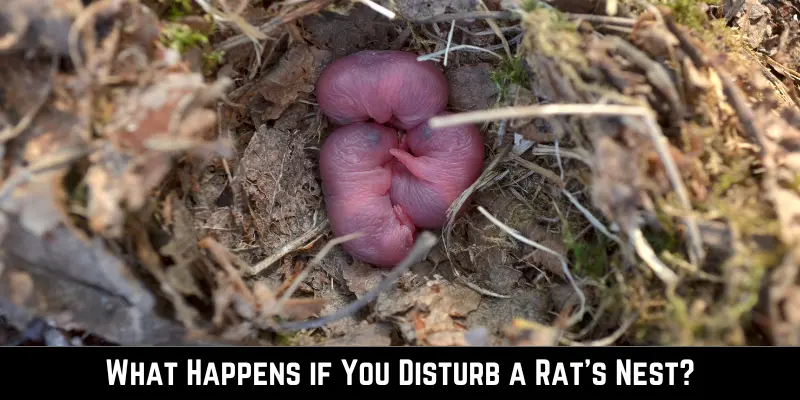Rats can be quite troublesome and pose a significant threat as pests, and eliminating them is a challenging task. When you try to get rid of them, you may cause some disturbance to their nest. However, what happens if you disturb a rat’s nest?
Disturbing a rat’s nest can lead to various circumstances depending on the situation and the rat’s behavior. Rats are territorial pests, so if they sense that their nest is in danger, they will defend it. Their common reaction includes defensive behavior, escape, increased agitation, and wild behavior.
Do you want to know more about the behavior of a disturbed rat? If so, read the below guidelines to gain in-depth knowledge about it.
What Is the Appearance of the Rat Nest?
Rat nests resemble bird nests, but they are typically made of soft materials found around the house, such as paper products, cardboard, clutter, trash, and even shredded cloth. The appearance of a rat’s nest can vary, but generally, it looks like a ball that is 4 to 6 inches in diameter and is loosely woven.
You may also detect droppings and urine near the nest. Rat nests are frequently discovered in hidden spaces such as wall voids or attics where they can construct their refuge without being disturbed. If you’re not sure whether the nest belongs to rats, seek for other symptoms of an infestation, such as chewed power cables, furniture legs, insulation, or food packaging.
Signs of Rats Nest

A rat’s nest is a site where rats build nests for shelter and reproduction. Signs of a rat’s nest might vary depending on region, however, some common indicators include:
- Rat droppings are an obvious indicator of their existence. These are usually little, black pellets that are found close to their nests.
- If you find shredded paper, fabric, insulation, and other materials in the corner or hidden spot, it may indicate a rat’s nest.
- Rats chew on various materials, including food packages and cables. If you observe gnawing marks on food or other goods, it could be a sign of a rat’s nest.
- Odors in your house or building that you don’t like could indicate that there is a rat nest nearby.
- Moreover, pets may act strangely; they can get overly interested in a given location or try to enter areas where there might be rats.
How Can You Find the Location of a Rat’s Nest?
There are several methods you might use to locate a rat’s nest. First, search for concealed places close to any other indications of rodent activity in your home that you notice or hear. Rats tend to build their nests in places that are secluded and safe. Use a flashlight to help you see into dark corners and crevices.
Rodents including rats have tunnels underground and can make their nests in walls and attics of houses, among other places. You can also find them in basements or lower floors and in dwellings. It is also possible for numerous burrows or nests to coexist.
Remember to take proper care when dealing with rats or their nests because they can spread infections. If you are unclear on how to handle the matter, it is better to get professional help from pest control experts.
Places Where Rats Nest Most
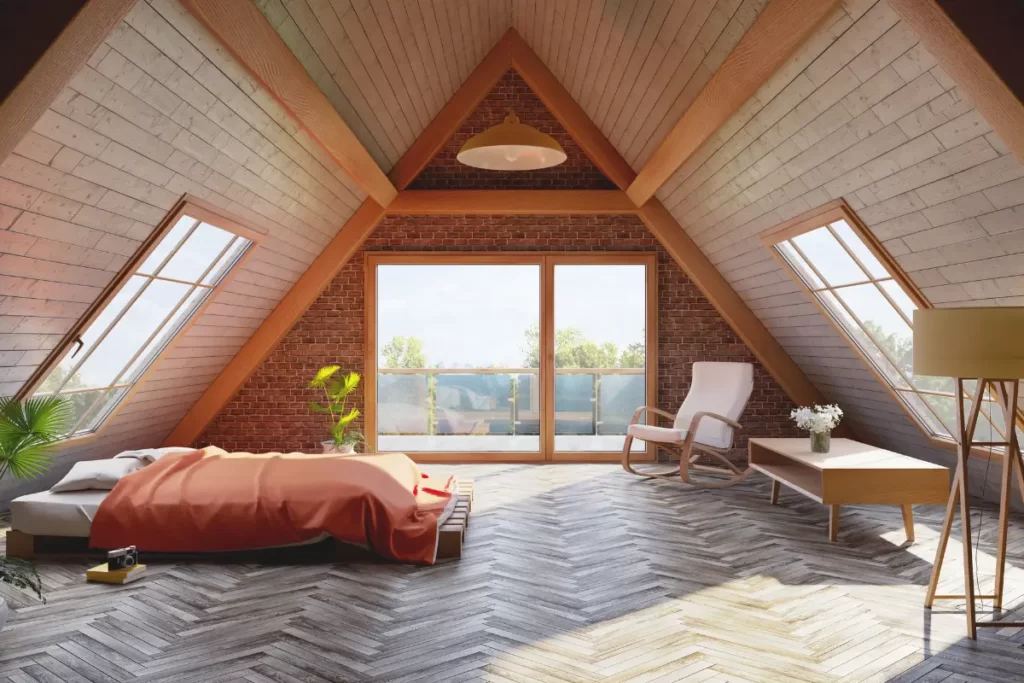
Rats are adaptive critters that can be found nesting in several locations, particularly in urban and suburban areas. Below are some common places where rats build their nests.
- Rats frequently make nests in houses and building walls, attics, basements, and crawl spaces.
- You may often find them in areas with plentiful food sources, such as rubbish dumps and dumpsters.
- Rats may dig tunnels in gardens or yards, especially in densely forested areas.
- You may often find nests of rats in warehouses that store food products.
- Rats are known to explore sewer networks and build nests in underground tunnels.
- Moreover, rats may use holes and dug areas to build their nests.
- Rats may nest in and among piles of rubbish and debris in sites such as junkyards.
Season and Time of Rats Nesting
Rats are known to nest all year, and their nesting patterns vary according to species and environmental conditions. While there is no precise season when all rats nest, there are some basic similarities to their nesting activity.
Rats often prefer safe and secure breeding areas, which may include burrows, nests, or concealed niches in structures. They are known to reproduce all year, thus the presence of nesting rats can be a problem at any time.
Rats are considered nocturnal creatures because they are generally more active at night. They may, however, also be active throughout the day, particularly if they sense safety in their surroundings or are hungry.
It’s crucial to remember that rat behavior varies and that elements like food, water, and predator presence can affect when rats build nests.
Types of Rats Make Nests

Rats are famous for their nesting behavior. Depending on their species and environmental conditions, different types of rats may make different nests. The Norway rat and the roof rat are two species of rats frequently linked with nesting.
Norway rats dig burrows and build nests beneath surfaces. They frequently dig tunnels in the ground, beside building foundations, and in other safe places. These rats construct their nests out of a range of materials, including fabric, shredded paper, insulation, and plant matter. Moreover, they take advantage of any chance and utilize whatever is around them.
On the other hand, roof rats are more prone to build their nests above ground, frequently in attics, trees, and other tall places with lots of flora. They like to construct their nests in higher altitudes and are skilled climbers.
Furthermore, similar to Norway rats, roof rats use different nesting materials. They may use leaves, twigs, paper, and other soft materials to create their nests.
In General, How Many Rats Make Up a Nest?
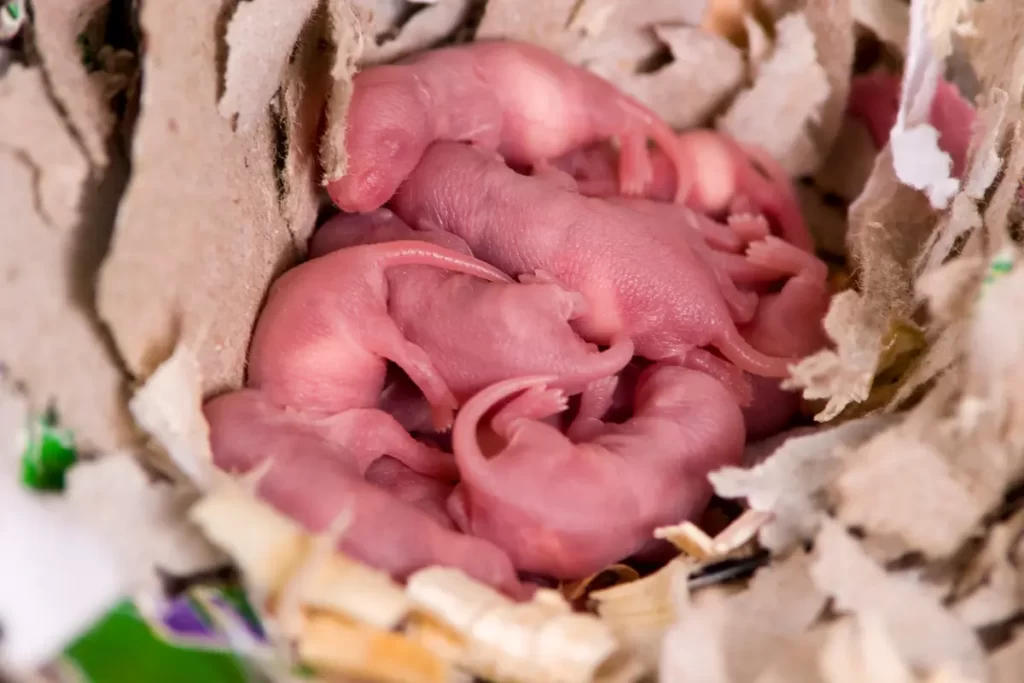
Rats typically live in big groups inside homes with simple hiding spots for nests. Rat nests accommodate 5 to 10 rodents, though this number may vary depending on the age of the nest or the presence of progeny.
They frequently develop colonies by building many nests adjacent to one other, increasing the number of rats in a given space.
For example, the Norway rat (Rattus norvegicus), sometimes known as the brown rat, is a social animal that builds hierarchical colonies. A colony of rats may consist of multiple rats, with a dominant male and female in charge. Several factors affect the colony size, such as food availability and the quality of the nesting place.
It’s crucial to note that rat populations can develop quickly in ideal conditions, and a small nest can soon grow larger if there’s plenty of food and shelter.
Risk of Disturbing Rat’s Nest
Disturbing a rat’s nest causes various risks, so it’s crucial to proceed cautiously in these circumstances. Below are Some of the risks of disturbing a rat’s nest
Rats May Bite You
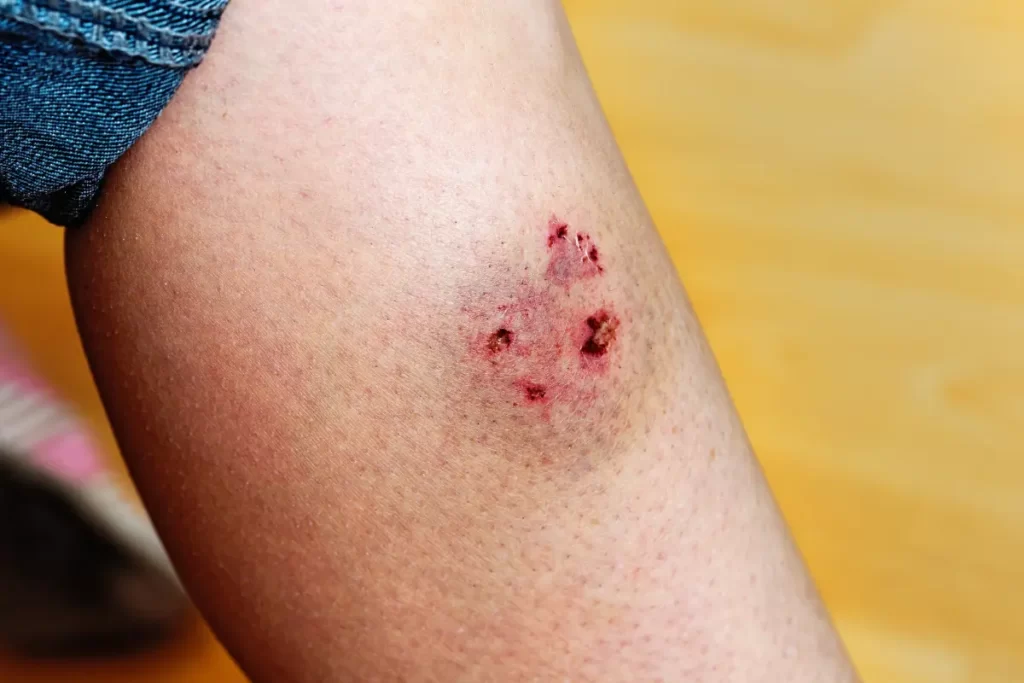
Rats can bite you for several reasons, disturbing them is the biggest reason for their aggression. Because of the sharpness of their teeth, they can bite you quickly and cause pain. Rats have powerful jaws and may apply a lot of force with their bites.
Moreover, rats are infamous for carrying diseases. If you go too close to them, you could contract one of them. In truth, rat bites are not only painful, but they can also transfer diseases that are lethal to people. Salmonellosis, Lassa fever, and plague are a few examples. Informatics in Medicine Unlocked states that humans get Lassa fever by contact with infected rodents.
You May Get an Infection
Disturbing a rat nest may expose you to various health concerns because they carry diseases transmissible to humans. You may catch infections if you have a direct touch with a rat or its droppings, urine, or saliva. Disturbing a rat’s nest may release dust particles containing allergies, germs, and other diseases. When you inhale these dust particles, they can cause respiratory infections or allergic reactions.
Moreover, rats may bite or scrape if they feel threatened. Rat bites and scratches can bring bacteria into the circulation, potentially causing illnesses. Additionally, rats can carry fleas and ticks, which may bite humans and transmit diseases such as typhus and Lyme disease.
Parasite Exposure
Disturbing a rat nest might expose you to parasites and other health concerns linked with rodents. Rats can carry a variety of parasites, including fleas, mites, and ticks, as well as diseases like hantavirus and leptospirosis. Fleas and ticks can infest rats, and these parasites can then be transmitted to you. Fleas, for example, can spread diseases such as plague.
Rats May Relocate
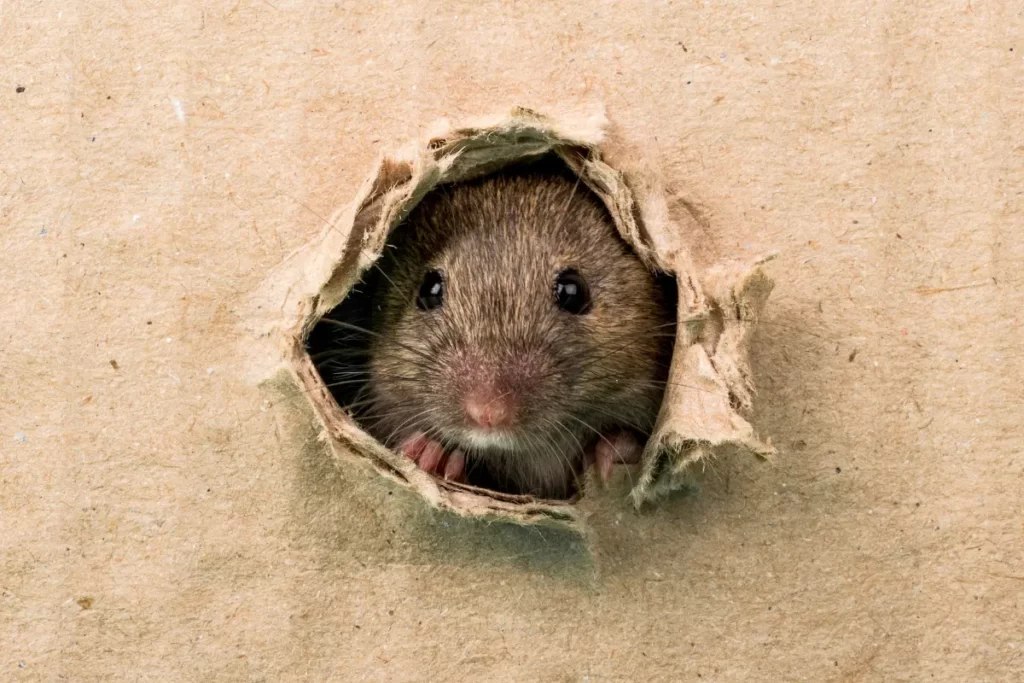
If rats feel danger or disruption, they will frequently attempt to flee the immediate area. They are fast to move to a safer spot. Rats may attempt to repair or rebuild their nests in the same spot if the disturbance is mild. They collect materials like paper, fabric, and other suitable stuff to rebuild their nests.
What’s more, rats have multiple nests or burrows within their territory. If one nest is disturbed, they may move to another pre-existing nest. Besides that, rats are nocturnal species, therefore they may wait until nighttime to relocate when they are less likely to be noticed by predators or humans.
Infestation of Rats
Although rats are known to be quite adaptive, they can get agitated and disoriented when you disturb their nests. This stress may cause them to seek new breeding locations, and if they discover favorable conditions in and around human dwellings, this might result in an infestation.
Moreover, disturbing nests may cause rats to move around more frequently in search of shelter, food, and water. This increased migration can bring them closer to human habitations, increasing the likelihood of infestation.
Damage to Property
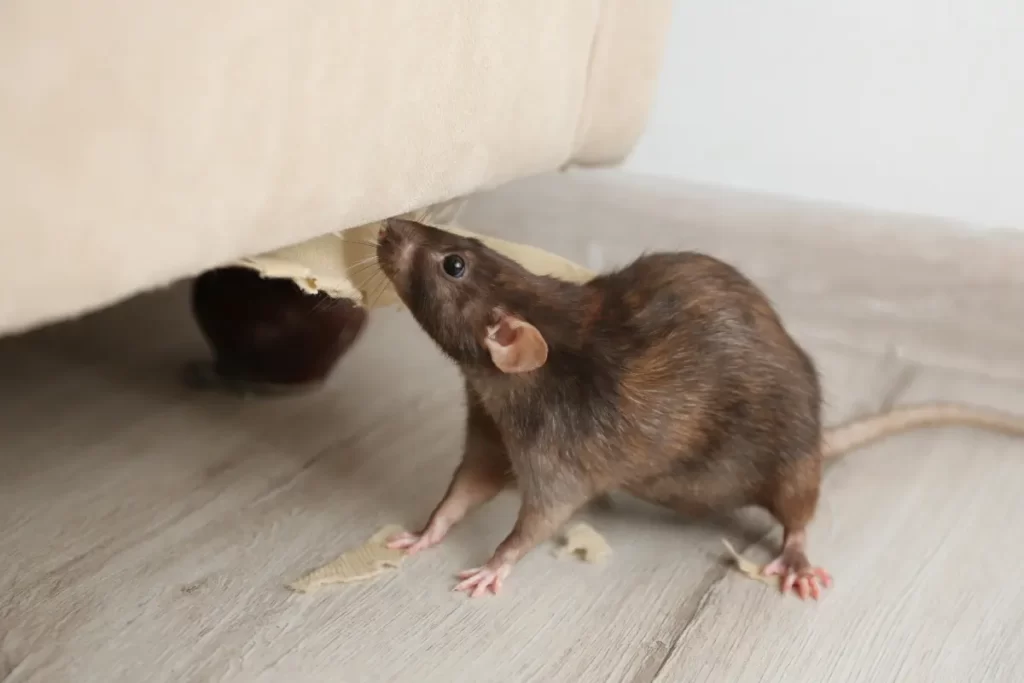
Rats are territorial creatures, and any interference with their nests may pose a threat. They may become violent in an attempt to defend their territory, causing damage to neighboring items, including property. If the mother rat detects a threat to her babies, she may become exceedingly defensive and aggressive. So, to protect her children, she may cause damage to anything in her area.
Rebuild the Nest
Rats have a strong urge for nest-building and keeping a safe and happy home. When you disturb their nests, rats frequently rebuild to reestablish their refuge and preserve a sense of security. It is an instinct for survival and reproduction. Disturbing their nest may cause a threat to their safety and well-being, forcing them to rebuild or repair it to re-establish a secure habitat.
Additionally, rebuilding the nest allows them to mark and reclaim their territory, reinforcing their sense of control and security.
How Can You Prevent Rats from Nesting on Your Property?
You can prevent rats from nesting on your property by the below steps:
- Inspect your property for gaps, holes, or cracks in the walls, foundation, and around windows and doors, and if you find any, seal them immediately with caulk.
- Keep the area clean by eliminating food sources. Cover your garbage cans with a tight lid. Store food in tight containers, and don’t leave your pet food outside.
- Trim trees and bushes near your home, as rats can use overhanging branches to gain access to roofs and other structures.
- Check to see if your bird feeders are rat-proof. Clean up any spilled birdseed right away.
- You can plant rat-resistant vegetation around your property to keep rats away.
- Moreover, you can use rat traps or baits strategically, especially in areas where rats are likely to frequent.
- Above all, if the rat infestation is severe, consider hiring a professional pest control service.
How Can You Remove a Rat’s Nest?
You should remove a rat’s nest with caution because rats can spread diseases and become aggressive if they feel threatened. Below are some ways to remove a rat nest.
Kill the Rats
The first thing you can do before removing a rat’s nest is to kill them. For this, you can use live traps to catch the rats without harming them. Once they get trapped, you can release them far away from your home or property.
To prevent the spread of infections, dispose of any deceased rats with care using rubber gloves, wrapping them in a plastic bag, and throwing them in the garbage. Above all, make sure to pick up the waste immediately so it doesn’t attract more critters or scents.
Remove the Nest
After killing the rats, the next step is to remove the nest. After removing the rats, you should handle the rat nest carefully and hygienically to protect yourself and to stop the spread of illness. First, you should wear protective gloves, a mask, and preferably long sleeves and pants to protect yourself from any potential pathogens in the nest.
You can use a plastic bag and place the dead rats in it, now tie the bag tightly and dispose of it. Now, carefully remove the nesting material, like shredded paper, plastic, and fabric to clean the area completely.
Clean the Place
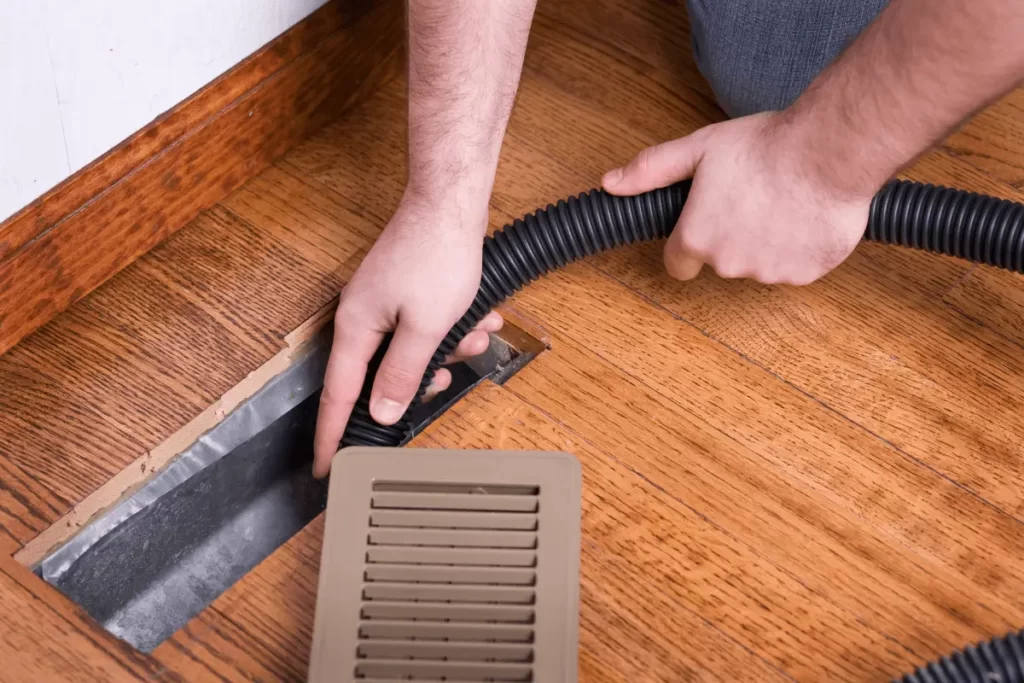
The most important thing to do after removing the rat’s nest is to clean the area to prevent infection. You should clean any tools or equipment used during the removal process, such as traps or gloves, with a disinfectant solution. Moreover, you can use a disinfectant solution to clean and disinfect surfaces that may have come into contact with rat droppings.
You can use a mixture of bleach and water to disinfect the area. However, you should make sure to clean all surfaces, including floors and countertops.
What Should You Do if You Disturb a Rat’s Nest?
Disturbing a rat’s nest can be dangerous since it might provoke a protective response in the rats and increase the chance of disease transmission. If you disturb the rat’s nest accidentally, you should follow the below steps.
- As rats are aggressive and territorial pests, you should leave the area immediately to prevent any harmful attack.
- If you come into contact with the nest or the rats, properly wash your hands with soap and warm water.
- If the disruption occurs in or near your home, clean and disinfect the area completely. Make use of a disinfectant that has been proven to be effective against rodent-borne infections.
- Moreover, keep an eye on your health and the health of others. If anyone develops symptoms, seek medical help immediately.
Do Rats Leave if You Disturb Them?
While rats may leave a nest momentarily if disturbed, they will most likely simply nest nearby, producing many nests that compound the problem. Furthermore, if you can’t properly deal with the nest, they may return to the same location. Rats may escape or avoid an area if they judge it to be dangerous or if there is a rapid disruption.
However, rats’ reactions to disturbances can differ depending on circumstances such as food availability, shelter, and the degree of the disturbance. Moreover, rats are recognized for their versatility, and they can become adapted to human presence, particularly in urban areas. If rats have made a nest or a feeding area in a particular site, they may be less likely to flee if disturbed.
After Leaving Their Nest, How Far Do Rats Go?
Rats, like any other nesting organism, will avoid venturing too far from their nest if they believe it is safe. Food and extra nesting materials are the main reasons they leave the nest. Rats’ activity, which occurs at night or twilight, might cause them to go up to a mile depending on how scarce food is. However, they don’t venture more than 100 to 500 feet from the nest.
The distance rats travel after leaving their nest varies based on factors such as food, water, and shelter availability, as well as the presence of predators and other circumstances. In general, rats are opportunistic and will explore their surroundings in quest of supplies.
Moreover, rats are extremely versatile and can travel long distances in search of food and suitable habitat. They may investigate locations near human populations, such as homes, gardens, and garbage cans, in urban situations.
Is It Okay if a Rat Builds Its Nests in Your Home?
No, it’s not okay if a rat builds a nest in your home. The reason behind this is that rats can carry diseases, pose health risks, and cause property damage. Furthermore, they can spread quickly, which, if left unchecked, can become a more serious issue. You should take measures to remedy the situation if you believe that rats have made nests in your home.
You should seal all the entry points and remove food sources to prevent rats from building nests. Moreover, you can use traps to capture rats. Reduce the number of places where rats might hide in your home by keeping it tidy and clutter-free. Apart from that, if you have pets, avoid using poisons or traps that could hurt them. Consider pet-friendly alternatives.
Final Thoughts
Dealing with a rat infestation can be unsettling, and eliminating them poses a considerable challenge. Before attempting to remove or exterminate the rats, it’s vital to disturb their nests. However, this action comes with its own set of risks. There’s the potential of contracting a disease carried by rodents, and your pet’s health could be at risk.
Moreover, disturbing a rat’s nest might increase their infestation, or they relocate to somewhere else. Therefore, it’s better to employ precautions to prevent their infestation. You can remove rats by sealing all the entry points and using traps, baits, and essential oils to ward them off. Above all, if you are not expert enough to deal with rats, ask for help from a professional pest control company.
FAQs
Olumuyiwa James Peter, Adesoye Idowu Abioye, Festus Abiodun Oguntolu, Titilayo Abimbola Owolabi, Michael Oyelami Ajisope, Abdullaziz Glabe Zakari, Timilehin Gideon Shaba,Modelling and optimal control analysis of Lassa fever disease,
Informatics in Medicine Unlocked, Volume 20, 2020, 100419, ISSN 2352-9148,
